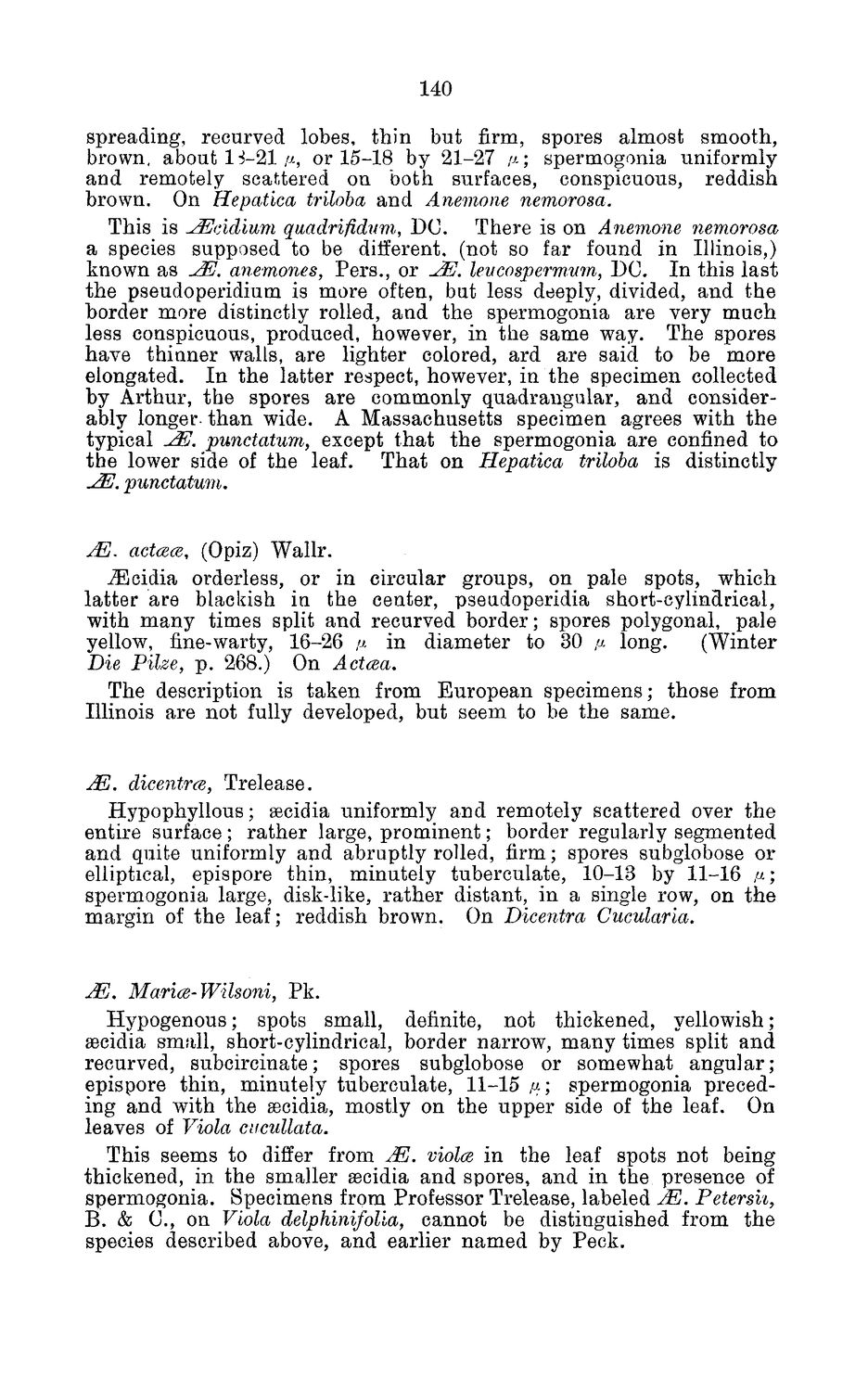| |
| |
Caption: Board of Trustees Minutes - 1884
This is a reduced-resolution page image for fast online browsing.

EXTRACTED TEXT FROM PAGE:
140 spreading, recurved lobes, thin but firm, spores almost smooth, brown, about 13-21 ^, or 15-18 by 21-27 v; spermogonia uniformly and remotely scattered on both surfaces, conspicuous, reddish brown. On Hepatica triloba and Anemone nemorosa. This is JEcidium qaadrifidum, DC. There is on Anemone nemorosa a species supposed to be different, (not so far found in Illinois,) known as JE. anemones, Pers., or JE. leucospermum, DC. In this last the pseudoperidium is more often, but less deeply, divided, and the border more distinctly rolled, and the spermogonia are very much less conspicuous, produced, however, in the same way. The spores have thinner walls, are lighter colored, ard are said to be more elongated. In the latter respect, however, in the specimen collected by Arthur, the spores are commonly quadrangular, and considerably longer, than wide. A Massachusetts specimen agrees with the typical JE. punctatum, except that the spermogonia are confined to the lower side of the leaf. That on Hepatica triloba is distinctly uffi. punctatum. M. actcece, (Opiz) Wallr. iEcidia orderless, or in circular groups, on pale spots, which latter are blackish in the center, pseudoperidia short-cylindrical, with many times split and recurved border; spores polygonal, pale yellow, fine-warty, 16-26 p. in diameter to 30 n long. (Winter Die Pilze, p. 268.) On Actcea. The description is taken from European specimens; those from Illinois are not fully developed, but seem to be the same. M. dicentrce, Trelease. Hypophyllous; secidia uniformly and remotely scattered over the entire surface; rather large, prominent; border regularly segmented and quite uniformly and abruptly rolled, firm; spores subglobose or elliptical, epispore thin, minutely tuberculate, 10-13 by 11-16 /*; spermogonia large, disk-like, rather distant, in a single row, on the margin of the leaf; reddish brown. On Dicentra Cucularia. M. Maria-Wilsoni, Pk. Hypogenous; spots small, definite, not thickened, yellowish; secidia small, short-cylindrical, border narrow, many times split and recurved, subcircinate; spores subglobose or somewhat angular; epispore thin, minutely tuberculate, 11-15 #; spermogonia preceding and with the secidia, mostly on the upper side of the leaf. On leaves of Viola cucullata. This seems to differ from M. violce in the leaf spots not being thickened, in the smaller secidia and spores, and in the presence of spermogonia. Specimens from Professor Trelease, labeled M. Petersk, B. & C., on Viola delphinifolia, cannot be distinguished from the species described above, and earlier named by Peck.
| |